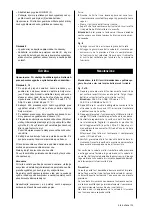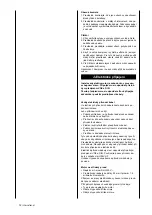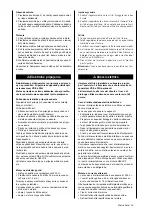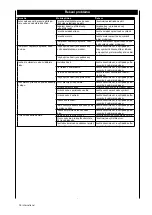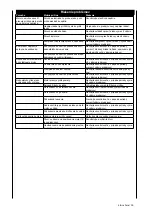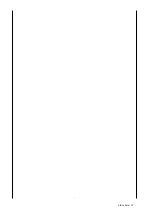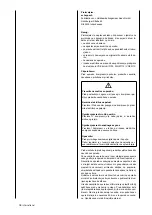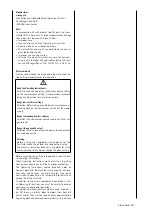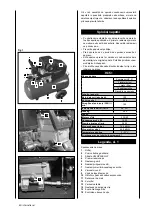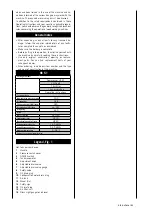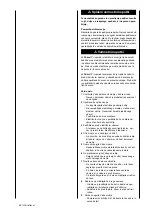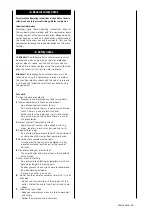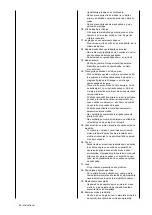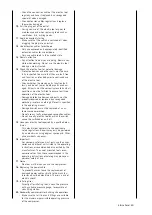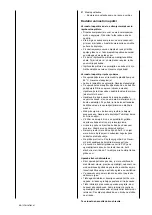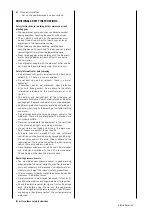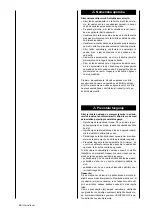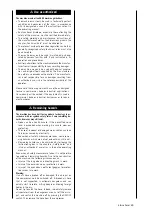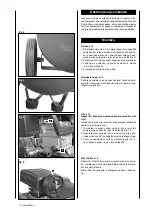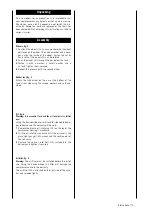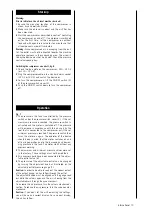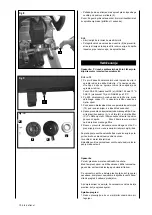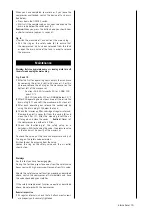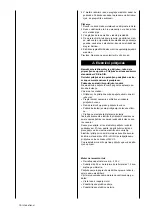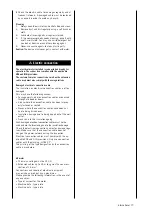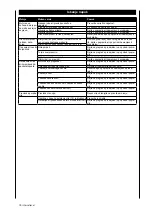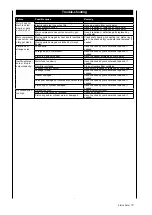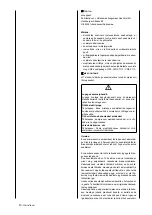
international 65
– Check the connection cable of the electric tool
regularly and have it replaced by a recognised
specialist when damaged.
– Check extension cables regularly and replace
them when damaged.
10 Pull the plug out of the outlet
– During non-use of the electric tool or prior to
maintenance and when replacing tools such as
saw blades, bits, milling heads.
11 Avoid inadvertent starting
– Make sure that the switch is switched off when
plugging the plug into an outlet.
12 Use extension cables for outdoors
– Only use approved and appropriately identified
extension cables for use outdoors.
– Only use cable reels in the unrolled state.
13 Remain attentive
– Pay attention to what you are doing. Remain sen-
sible when working. Do not use the electric tool
when you are distracted.
14 Check the electric tool for potential damage
– Protective devices and other parts must be care-
fully inspected to ensure that they are fault-free
and function as intended prior to continued use
of the electric tool.
– Check whether the moving parts function fault-
lessly and do not jam or whether parts are dam-
aged. All parts must be correctly mounted and all
conditions must be fulfilled to ensure fault-free
operation of the electric tool.
– Damaged protective devices and parts must be
properly repaired or replaced by a recognised
workshop, insofar as nothing different is specified
in the operating manual.
– Damaged switches must be replaced at a cus-
tomer service workshop.
– Do not use any faulty or damaged connection cables.
– Do not use any electric tool on which the switch
cannot be switched on and off.
15 Have your electric tool repaired by a qualified elec-
trician
– This electric tool conforms to the applicable
safety regulations. Repairs may only be performed
by an electrician using original spare parts. Other-
wise accidents can occur.
16 Important!
– For your own safety you must only use the acces-
sories and additional units listed in the operating
instructions or recommended or specified by the
manufacturer. The use of mounted tools or ac-
cessories other than those recommended in the
operating instructions or catalog may place your
personal safety at risk.
17 Noise
– Wear ear muffs when you use the compressor.
18 Replacing the power cable
– To prevent hazards, leave the replacement of
damaged power cables strictly to the manufac-
turer or a qualified electrician. There is a risk of
electric shock!
19 Inflating tires
– Directly after inflating tires, check the pressure
with a suitable pressure gauge, for example at
your filling station.
20 Roadworthy compressors for building site operations
– Make sure that all lines and fittings are suitable
for the maximum permissible operating pressure
of the compressor.
Summary of Contents for 5906107901
Page 57: ...international 57...
Page 155: ...international 155 14...
Page 156: ...156 international...
Page 157: ...international 157...
Page 158: ...158 international...

